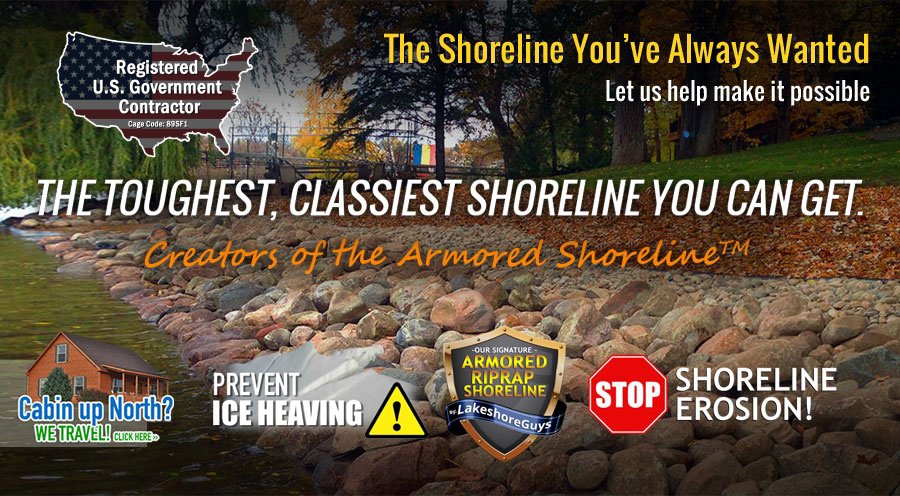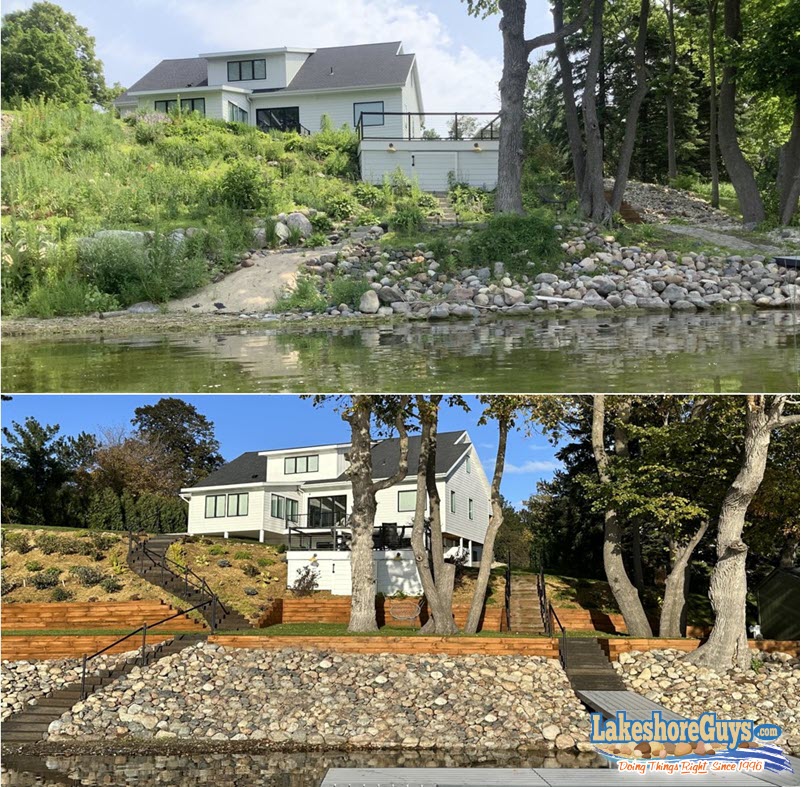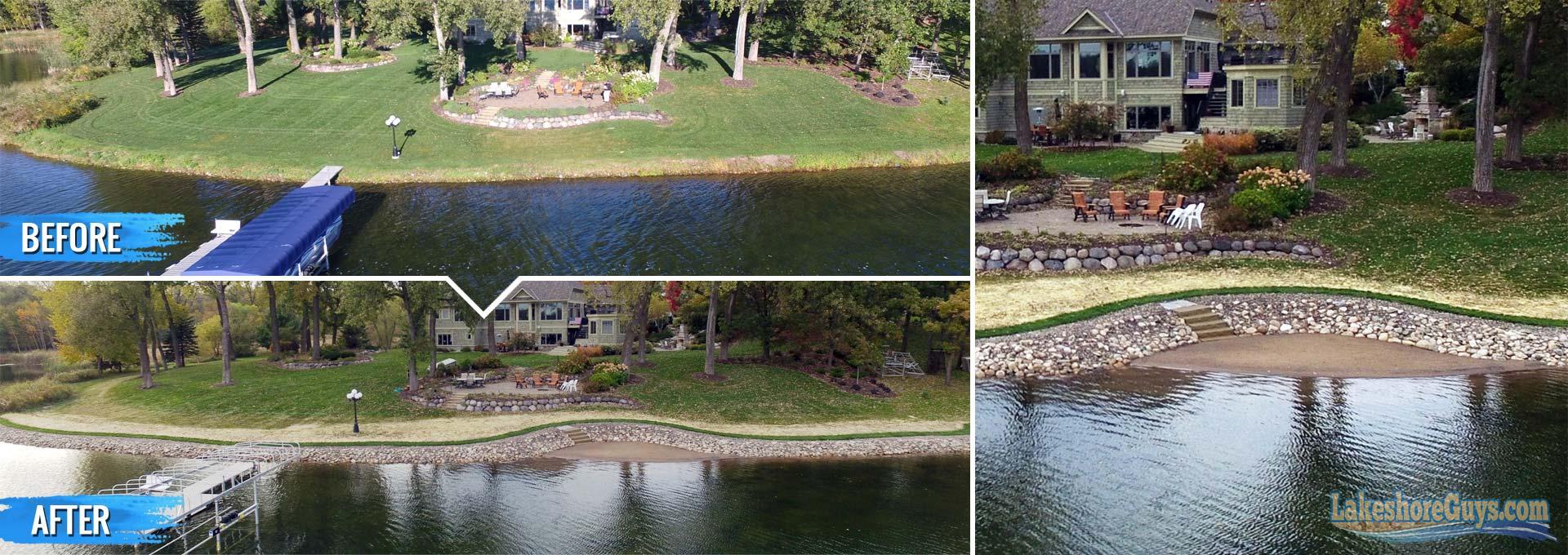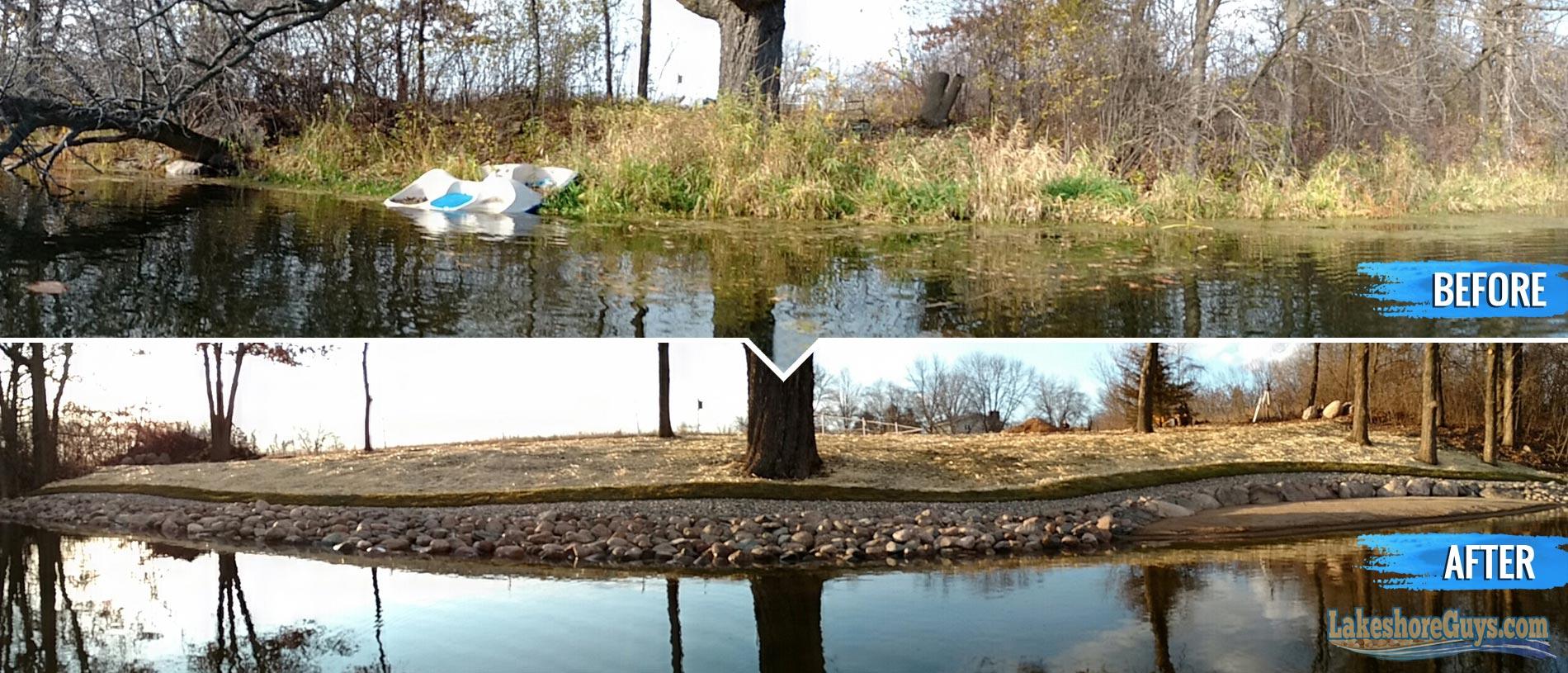How to Install Riprap Properly: a Cheat Sheet
Want an ugly shoreline that crumbles and erodes? Then hire a landscaper. But if you’re way past looking for quotes and want the toughest and most beautiful riprap shoreline – one that’s built once and built right by the best hands in the business – contact Lakeshore Guys today. We also build the toughest, finest boat ramps and staircases, in case you want even more ways to enjoy the perfect shoreline.
How to install a riprap shoreline that resists erosion and stands the test of time? Follow this short cheat sheet I’ve put together. (Not that it’s a DIY activity; contact Lakeshore Guys® if you’d like the toughest and best-looking riprap shoreline money can buy.)
In order of importance:
- Proper grade – No steeper than a 3:1 slope (horizontal to vertical) when possible. We always grade a shoreline prior to fabric and riprap installation.
- Compaction – Without compaction, a proper grade will be destroyed after pilling tens of tons of riprap on top of it. We always compact our grade prior to fabric and riprap installation.
- Fabric should be thoroughly stapled to the ground or shoreline. We use 6-inch steel staples throughout the entire sheet of fabric.
- Fabric should be free of seams wherever possible. If a seam is unavoidable, then the fabric must be overlapped by several feet and be shingled in the proper direction. We try to avoid seams whenever possible.
- If the muskrat-deterrent option is chosen, proper stainless-steel mesh with 1” or less squared or hexagonal openings must be used. Rolls of stainless mesh used should measure 3-4 feet in roll-width and extend approximately 1-2-feet into the water. We often use 6-7 foot-wide rolls of custom vinyl-coated stainless wire mesh, which not only fights corrosion, but also enables us to extend the wire mesh much further in & out of the water for added protection.
- Proper type and size of riprap – A clean mix of riprap 6 to 12 inches in diameter is common. We almost always use 6-12-inch or 6-18 inch Fieldstone riprap in shorelines, but any smooth rock between 6-30 inches in diameter would be acceptable. The steeper the shoreline, the larger the riprap should be.
- A rock bucket should be used during the installation of riprap. A rock bucket keeps your new shoreline free of dirt and other contaminants. It is a bucket with small openings in the sides and bottoms. We use it to scoop up the rock, allowing the dirt to fall in the bucket so that only clean riprap remains. We use a rock bucket we custom-built ourselves, which has larger and more openings in it than do the standard rock buckets used by other companies (although most other companies use regular dirt buckets).
- Proper installation of decorative borders (aka splash aprons) – When decorative borders (or splash aprons as we call them) are installed, it is important for the same piece of fabric beneath your riprap to extend landward far enough to cover the entire area beneath your decorative rock or mulch. We always leave several feet of excess fabric along the top edge of our shorelines so that a single piece of fabric can be used from the lake bottom all the way to the border of edging along your shoreline.
- Rubber tracks or turf tires – The type of mechanical footwear is important if you don’t want your yard destroyed by heavy equipment. Rubber flotation tracks should be installed on all equipment to minimize damage. It doesn’t matter how large or small your project is. Even a small project requires roughly 17 to 25 tons of riprap to cover adequately most shorelines. That requires a lot of trips back and forth through your yard. If you hire a company that uses regular tires, metal tracks, or even aggressive rubber treads, you will spend thousands more dollars on a major yard-repair project. We only use smooth rubber flotation tracks on our skid steers, and giant turf tires on our articulating Avant front-end loaders. The result is that for several seasons we haven’t had a single yard that required more than a little topsoil and seed here and there to remove any paw prints indicating we were there. We go out of our way to buy used tracks with little or no tread remaining, so we can flit across your yard again and again without causing significant damage. This means less work for us to repair damaged turf, less work for you to maintain fresh and delicate sod, and less money that we have to charge.
See photos of our work and contact Lakeshore Guys® for the toughest, best-looking riprap shoreline money can buy.






